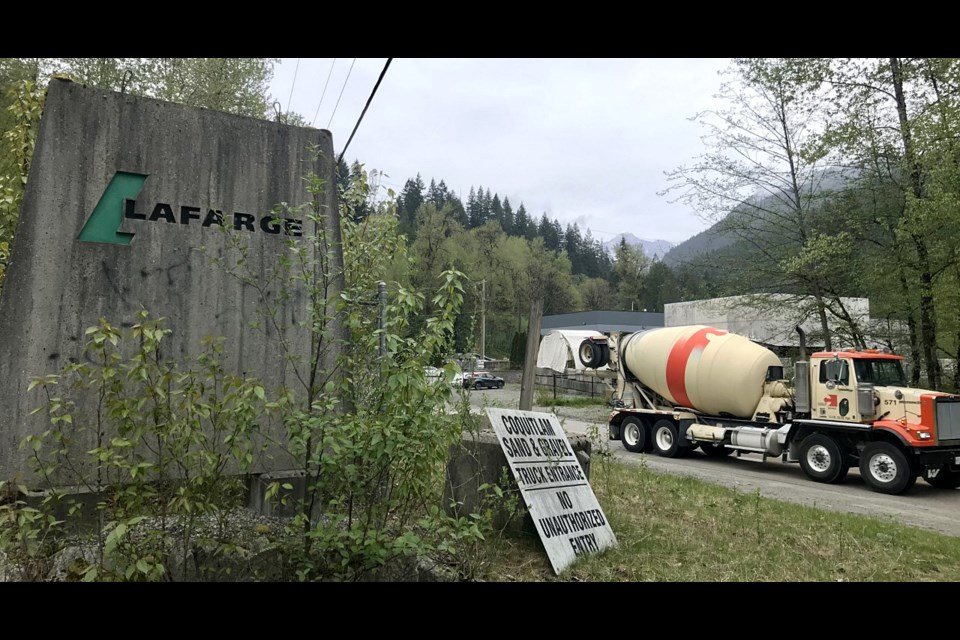A heavy industrial area that borders the Coquitlam River will undergo a city study to look at its future potential.
Monday, council OK’d the scope and process of the Upper Pipeline Road Corridor Planning Overview, a year-long planning exercise that will prepare the municipality for the eventual closure of the mining operations north of Galette Avenue.
The high-level review comes as the Greater Vancouver Water District (GVWD) is seeking a Crown Land Tenure Application from the provincial government to undertake investigative testing of the now-defunct Lafarge aggregate mine site as well as the adjoining Crown land at the top end of the Pipeline corridor.
Totalling 403 acres, the two Crown properties are being eyed by the GVWD for a $2.5-billion water supply project: a new upper Coquitlam Lake intake and a new water treatment plant that would link into the GVWD’s Coquitlam Water Main Project (due to start construction in 2022).
Coquitlam has asked the province for the GVWD bid be put on hold until its “holistic community planning process” is complete; the provincial government, in response, has asked Coquitlam to continue discussions with the regional agency while its application is under review.
“What we’re proposing is a planning overview of this area, which is largely outside of the Metro Vancouver regional growth strategy’s urban containment boundary,” said Jim McIntyre, Coquitlam’s general manager of planning and development services, at Monday’s council meeting. “In time, there may be some other opportunities and interest up in that area.”
Currently, the area around Upper Pipeline Road is owned by Allard Contractors and about a dozen homeowners; Lehigh Hanson has privately held leases plus a large Crown land lease. And the city owns the Upper Coquitlam River Park — a popular spot for remote-control car and plane enthusiasts.
The city didn’t include the valley in its Northwest Coquitlam Area Plan in 2002 (although the Allard Contractors’ quarry and seven residential lots were part of the 2017 Northwest Burke Vision document).
Now, with the recent closure of the Lafarge mine that’s now in the middle of site reclamation, the city wants to delve deeper into land ownership and the future plans of the existing sand and gravel operators, McIntyre wrote in his report to council.
As well, the city wants to explore if there’s potential for business and jobs, and expand outdoor recreation amenities such as access to Crystal Falls, which is located on the east side of the river and currently has no official trail to reach the waterfalls.
McIntyre also pointed to City Centre, where the municipality — decades ago — struck a deal with Lafarge to turn its former sand and gravel pit into a lake and park destination.
Asked by Coun. Bonita Zarrillo if Metro Vancouver, which oversees the GVWD, should be consulted for the Upper Pipeline Road visioning study, city manager Peter Steblin was blunt.
“This work should be conducted by the city of Coquitlam independently of anything that Metro Vancouver might want to do in that area because our interests are not necessarily aligned,” he told council. “Their interests are predominantly to see if they can put in a filtration plant there — it’s a very large industrial operation — and their previous work has been done without adequate consultation with the host community.”
“This piece of work is to be done to determine the host community’s aspirations for that area,” Steblin said, adding, “It would be our intent, through this process, to evaluate other possibilities of getting some land ceded to the city of Coquitlam” as with Lafarge Lake, when the city allowed the company more gravel extraction in exchange for the decommissioned pit at Town Centre Park, he said.
A letter explaining the Upper Pipeline Road study will be sent to area landowners, lessees and other stakeholders; details of the study will also be on the city website.





